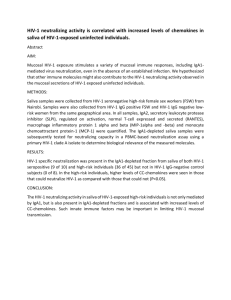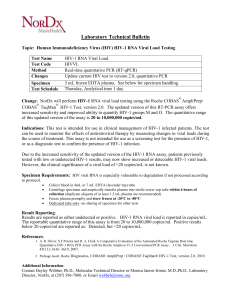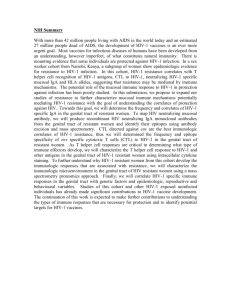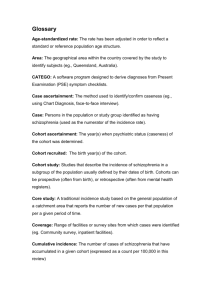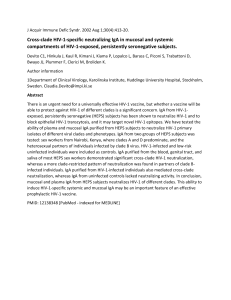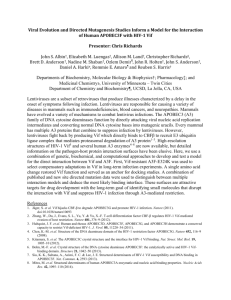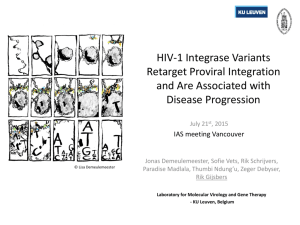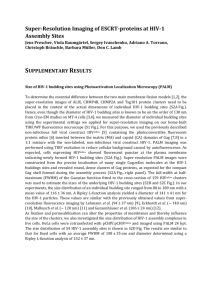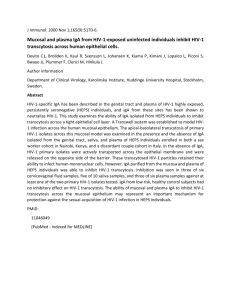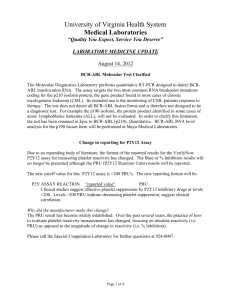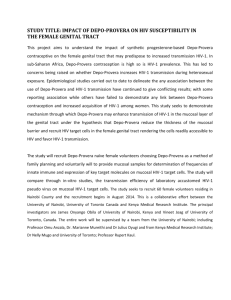Trends in HIV-1 incidence in a cohort of prostitutes in Kenya
advertisement
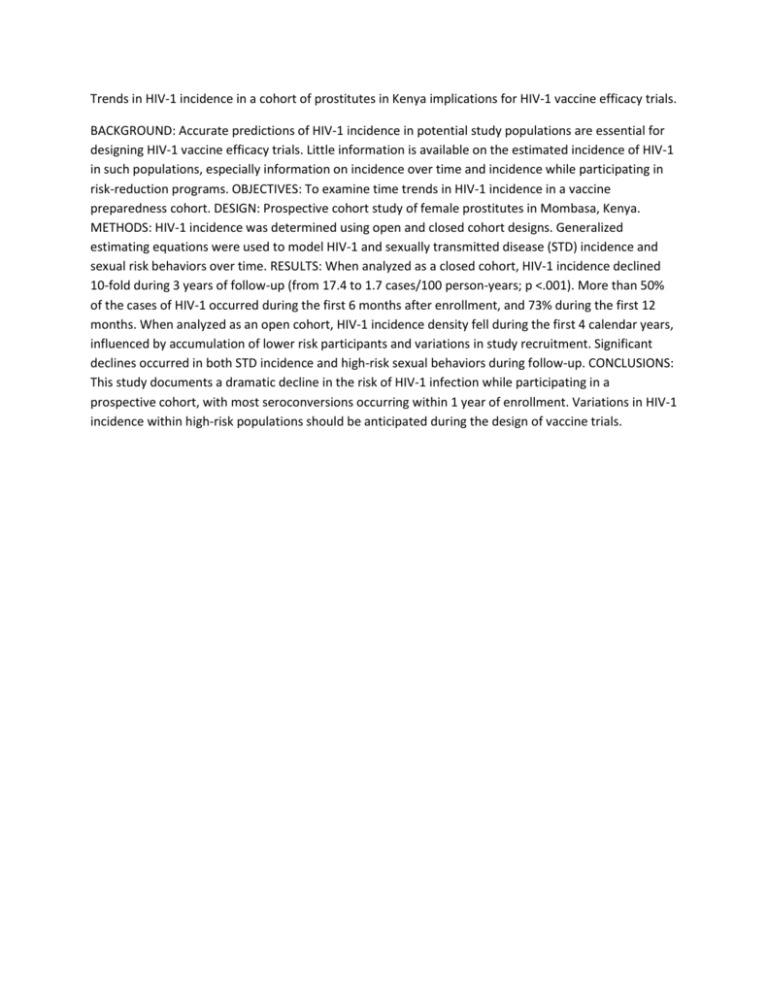
Trends in HIV-1 incidence in a cohort of prostitutes in Kenya implications for HIV-1 vaccine efficacy trials. BACKGROUND: Accurate predictions of HIV-1 incidence in potential study populations are essential for designing HIV-1 vaccine efficacy trials. Little information is available on the estimated incidence of HIV-1 in such populations, especially information on incidence over time and incidence while participating in risk-reduction programs. OBJECTIVES: To examine time trends in HIV-1 incidence in a vaccine preparedness cohort. DESIGN: Prospective cohort study of female prostitutes in Mombasa, Kenya. METHODS: HIV-1 incidence was determined using open and closed cohort designs. Generalized estimating equations were used to model HIV-1 and sexually transmitted disease (STD) incidence and sexual risk behaviors over time. RESULTS: When analyzed as a closed cohort, HIV-1 incidence declined 10-fold during 3 years of follow-up (from 17.4 to 1.7 cases/100 person-years; p <.001). More than 50% of the cases of HIV-1 occurred during the first 6 months after enrollment, and 73% during the first 12 months. When analyzed as an open cohort, HIV-1 incidence density fell during the first 4 calendar years, influenced by accumulation of lower risk participants and variations in study recruitment. Significant declines occurred in both STD incidence and high-risk sexual behaviors during follow-up. CONCLUSIONS: This study documents a dramatic decline in the risk of HIV-1 infection while participating in a prospective cohort, with most seroconversions occurring within 1 year of enrollment. Variations in HIV-1 incidence within high-risk populations should be anticipated during the design of vaccine trials.
